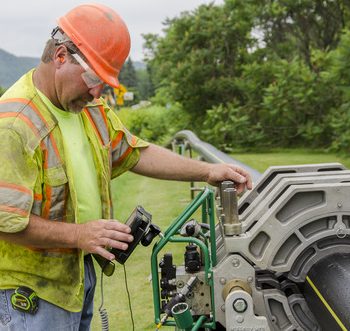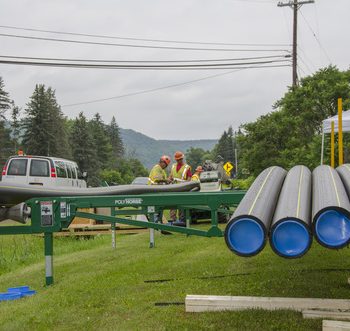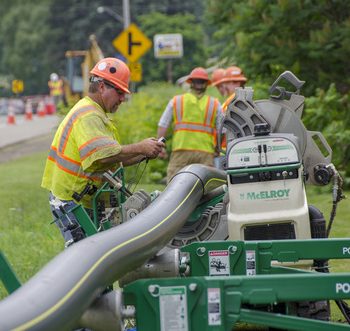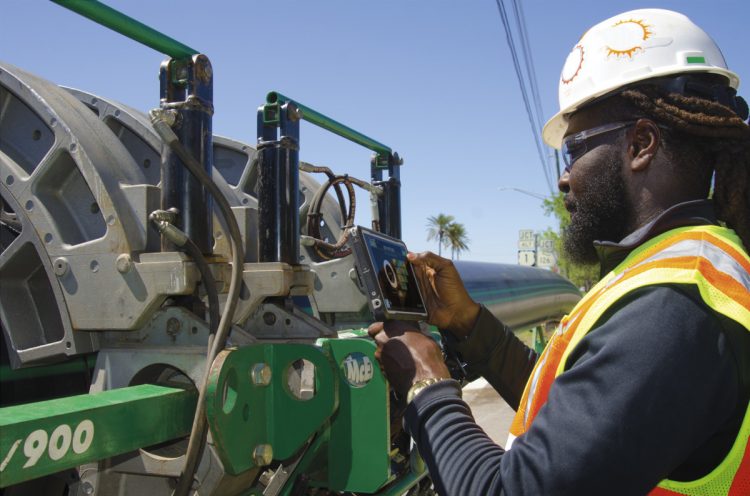Training
Using the McElroy DataLogger 6 as a training tool is an excellent way to integrate the practice of data logging into your fused pipeline operations. National Fuel Gas Distribution Corporation found that to be the case three years ago when they first started using the DataLogger specifically to train new operators.
The device helps their students learn how a fusion joint is made and the importance of the fusion shift sequence which is illustrated in a real-time fusion graph. Visual interpretation of the graph allows them to determine if they fused with the correct heat soak times, heating pressure, open/close times, fusion pressure and cool times.
The DataLogger 6 also supports a group-learning environment. Every action on the user-friendly interface could be cast on classroom monitors at National Fuel’s training center, giving all students the ability to clearly see each step of the fusion process. By using the device on the front-end with training, the stage was set to adopt data logging as a critical part of their fusion operations.
Testing for Qualified Fusion Operators
An intuitive interface design offers step-by-step instructions to guide operators through each step of the fusion process on an easy-to-use touchscreen. And since all of these processes are recorded, it was found to be a great tool for testing and qualifying certified fusion operators. Fusion trainers used the device to review each employee’s fusion records to determine if students had mastered all the sequences to produce a leak-free joint according to standard.
In the Field
After seeing how useful the DataLogger 6 was for training and qualification, National Fuel committed to using it in the field to ensure pipeline integrity. They found the data logging to be so important to their operation that they turned to UPSCO to replace all of their McElroy fusion equipment so that they would have a fleet of more than two dozen new machines that were equipped with a data port for the DataLogger.
“There was nothing wrong with it except we didn’t have the port so we went through a program over the last three years and we replaced every piece of McElroy equipment we had,” said Michael Argauer, National Fuel Training Manager.
Their first job with a DataLogger 6 was a 6-mile gas distribution modernization project in Hinsdale, NY, using 8-inch DR 9 high-density polyethylene (HDPE) pipe. As the operator fused each joint, two onsite inspectors viewed the fusion graph to make sure the key parameters of the fusion process were correct. Operators photographed each joint and captured jobsite conditions with the device’s dual cameras. They inputted pipe information instantly with a barcode scanner and were also able to pinpoint the GPS location of each joint so pipeline owners will have a record of where the joint was fused as well as its final resting place in the ground.
Quality Control in the Cloud
In addition to reviewing the fusion graph on the job in real-time, the joint reports from the DataLogger 6 were uploaded to the Vault, a secure online server, where they were sorted and analyzed in the Cloud by job, operator and machine. In an office miles away, their training supervisor was able to easily review the joint reports. In addition to on-site inspection of the fusion, they now had a way to confirm that all fusion parameters were met.
“Each individual joint is looked at four times one way or another before it is put in the ground,” Argauer said.
Once the job was complete, they had a complete record of each joint for safekeeping.
Validation
So why is data logging so important to today’s most innovative pipeline operators and contractors? Assurance, accountability and validation of the integrity of the pipeline. It fosters high-quality operators with the skills necessary to build pipeline infrastructures that will reliably serve their customers.
“We have positive assurance of the quality of the construction, we know it’s done right and the DataLogger saves all that information,” said Tom Canaan, National Fuel District Manager. “We can track the fusions and it gives us an assurance that the fusion was done properly.”
Data logging satisfies the growing number of governing agencies today who are requiring data logging as part of their quality control standards on all of their fusible pipe infrastructure. It also adheres to new standards, like ASTM F3124, which governs the collection of data for pipe fusion in plastic piping systems.




